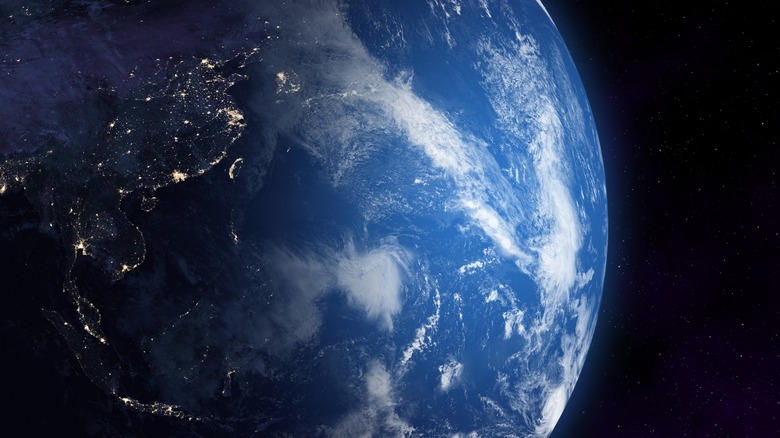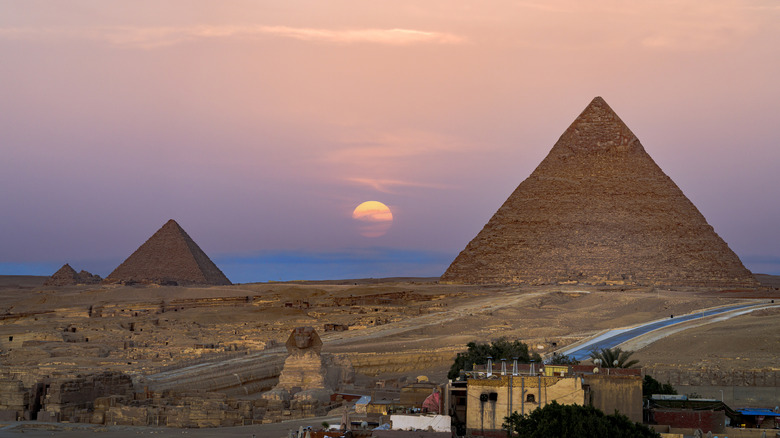The Myth About The Great Wall Of China You Probably Fell For
In 1999, only one of the original Seven Wonders of the Ancient World — the Great Pyramid of Giza — was still standing. So Swiss adventurer Bernard Weber came to the conclusion that the people of the 21st century deserved seven "new" wonders to admire in awe. The process of finding the new Wonders took a total of eight years and included the tallying of around 100 million votes from around the world. Some famous landmarks, such as the United States' Statue of Liberty, lost out, but few could argue that any of the seven chosen — Brazil's Statue of Christ Redeemer, Peru's Machu Picchu, Mexico's Chichen Itza, Jordan's Petra, Italy's Colosseum, India's Taj Mahal, and of course, the Great Wall of China — didn't deserve their place.
The Great Wall of China was, of course, a shoo-in. Construction began in the 7th century B.C. during the Tang dynasty and continued for more than 1,000 years. If you counting all its branches (it's not a single continuous wall as you might imagine), it's over 13,000 miles long, the longest structure ever made by humankind. It's so massive that it has attracted a rather strange trivia fact about it: That it's the only manmade structure you can see from space, an incredible feat considering it was built centuries ago, before the advent of modern construction. But is it true? Well, in a word ... no. It's a complete myth, for a very simple reason.
Why you cannot see the Great Wall of China from space
There are several reasons why the belief that the Great Wall of China can be seen from space is mistaken. For a start, while the scale of the wall sounds enormous on paper, the network of walls is not particularly large in terms of landmass at any point. Much of it comes down to the truth of its scale. At its widest, the Great Wall of China is just 32 feet thick — not much bigger than a modest house. Would we expect to see a house, or a row of houses, from space? Likely not.
The rumour that the wall was visible from space was apparently in circulation among schoolchildren shortly after the Apollo 11 lunar mission. But at that distance, the human eye would have no chance of seeing such a structure due to the eye's limited resolution capabilities, which modern cameras far outstrip. Even at the International Space Station, which is just 250 miles from Earth, it would be impossible to see.
Are there any structures you can see from space?
With that said, there are some smaller details that are apparently visible from space. According to astronomer Phil Plait of Scientific American, contrasting objects may be visible. For example, the wake of a large ship, which in the right conditions would appear to an astronaut's eye to be bright white against the blue of the ocean.
Tantalizingly, Plait also claims that when the sun is low in the sky across China, it might be possible to see an extended shadow of the wall across the earth. However, the wall itself, the tone of which does not contrast strongly enough against the earth surrounding it, would still be invisible to the human eye.
However, anecdotal evidence from some astronauts has suggested that one Wonder of the World can be seen from space: the last surviving original one. According to NASA astronaut Leroy Chiao, he was able to spot two of the Great Pyramids of Giza, the largest of which measures more than 750 feet along its base. Though the sightings haven't been confirmed by other humans who have been to space, there is no reason to believe Chiao is pulling a prank — something astronauts have been known to do.


